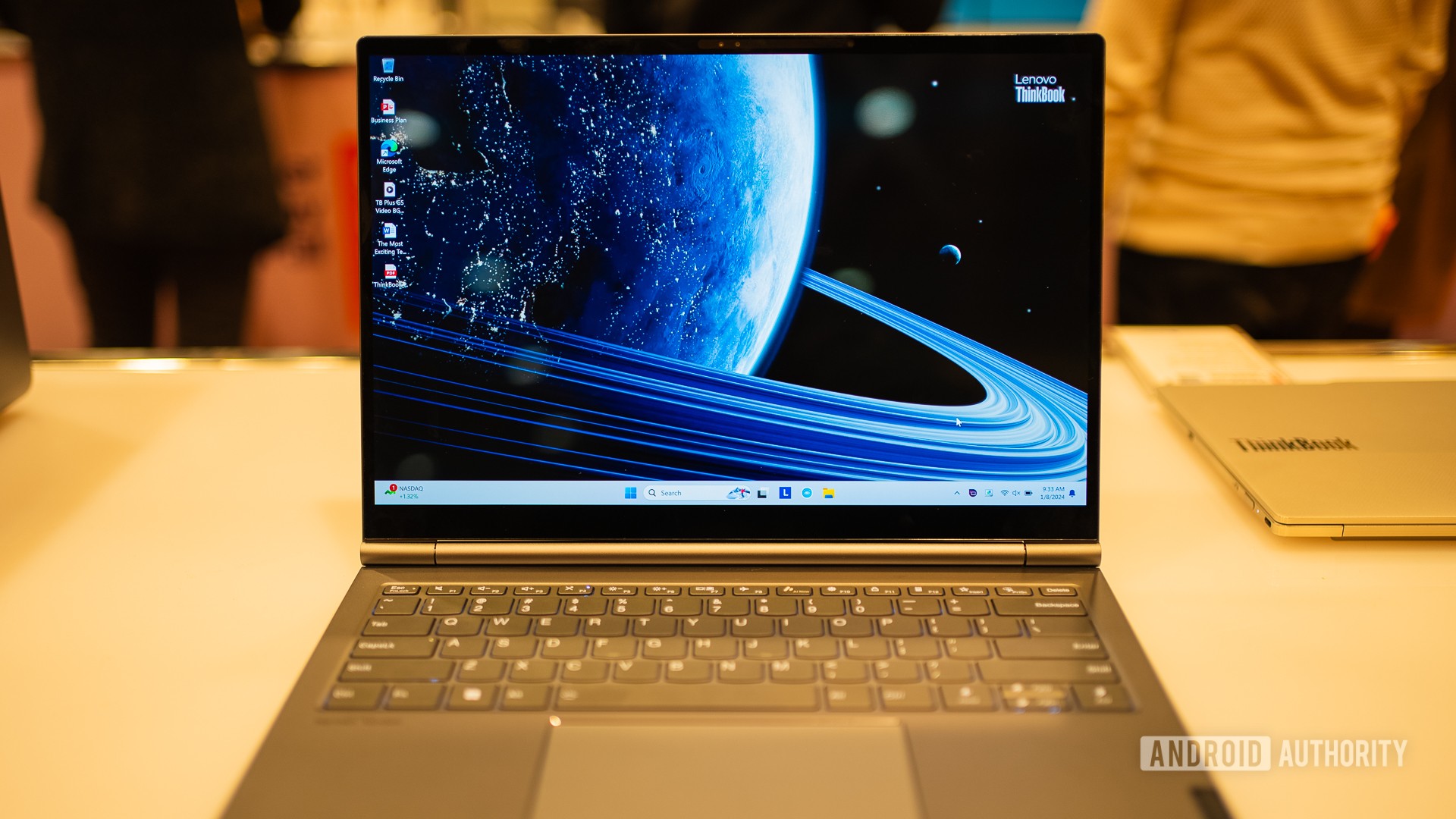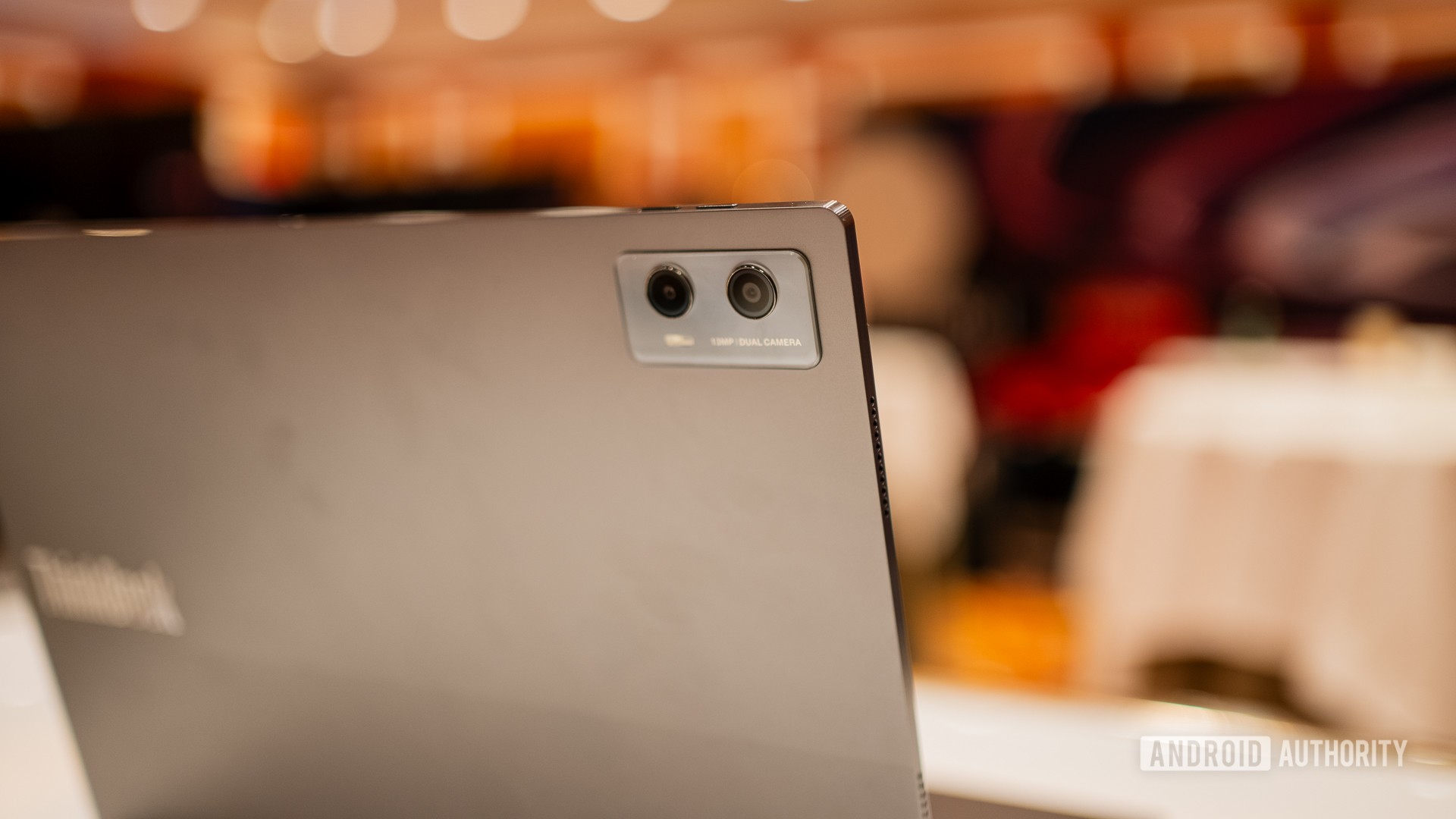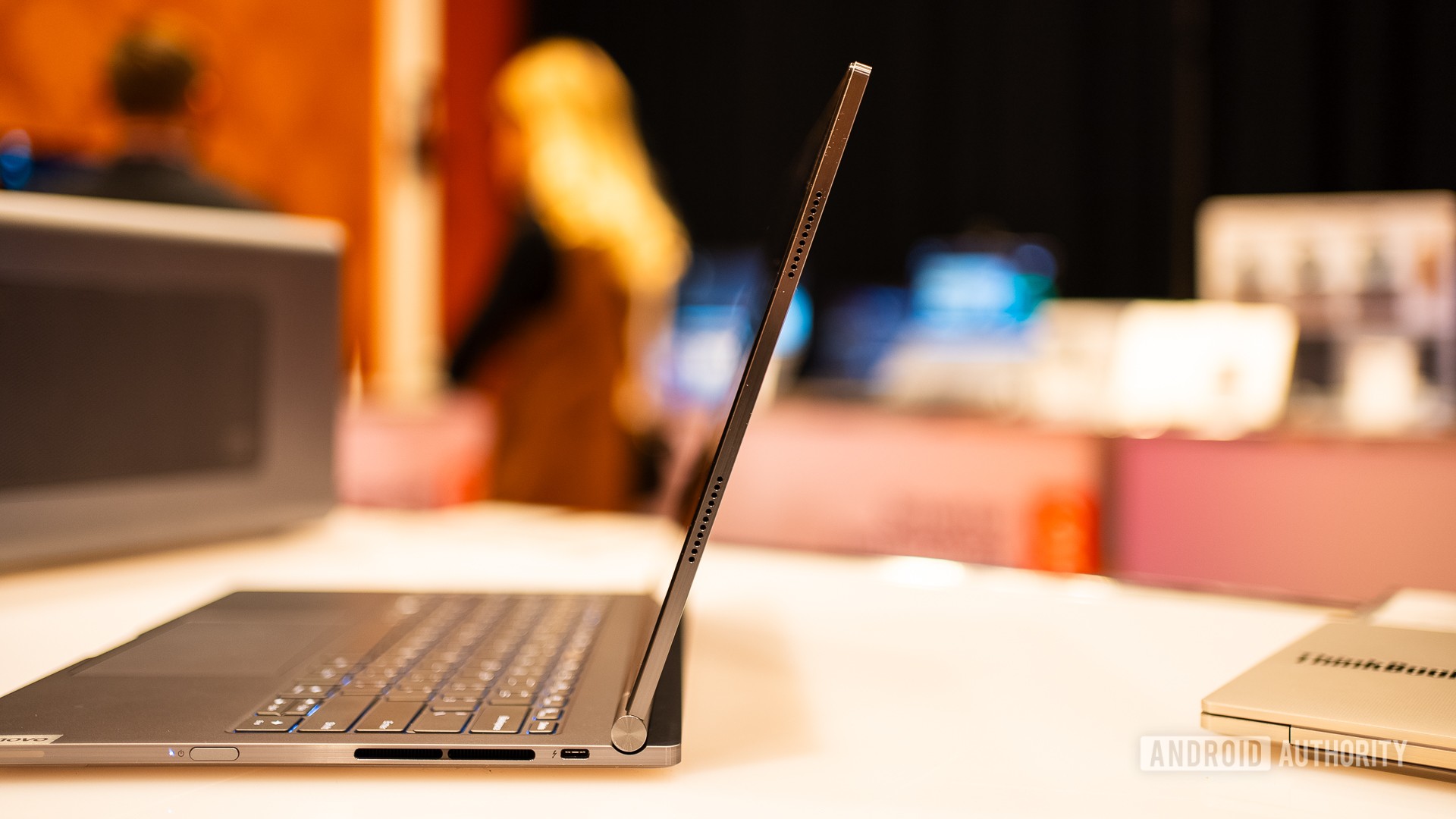Affiliate links on Android Authority may earn us a commission. Learn more.
Hands-on with the Lenovo hybrid that's both a Windows laptop and an Android tablet
At first glance, the Lenovo ThinkBook Plus Gen 5 looks like your standard Windows laptop, but when you take the display off, it becomes an Android tablet. I got to check out Lenovo’s truly hybrid 2-in-1 at CES 2024 — read on for my first impressions, or watch the video above to see it in action.
With the display docked, the ThinkBook Plus Gen 5 is a fairly generic 14-inch Windows laptop. It’s a little bit thicker and heavier than you might expect from a laptop this size, but that’s because it’s essentially two machines in one.
Inside the keyboard, or the hybrid dock station, you’ve got a full Windows experience. Remove the display and you have your Android tablet. Despite the added weight, the machine’s hybrid nature does give it a lot of versatility. Maybe you want to watch a movie on the Android tablet, but dig into some spreadsheets on the Windows side with a full keyboard — with the ThinkBook Plus Gen 5 you can do just that using whichever OS or form factor best suits a specific task.

Of course, the fact that you have two wholly separate operating systems does lead to some trade-offs. For example, when you take the tablet off, you won’t get continuity from the Windows software. What you were doing on the laptop is not going to immediately transfer over to the Android tablet. But you do get file sharing — if you save a file on your Windows machine, you can access that on the Android tablet. This adds some convenience for hybrid work tasks and environments. This can be further enhanced by hooking up a monitor to the base, as then you can use the Android and Windows systems simultaneously.
As far as its suitability as an Android tablet, the ThinkBook Plus Gen 5’s detachable 2.8K OLED display is obviously pretty big at 14 inches, but it’s pretty light in the hand. Based on my short time with it, I feel like I would be okay holding it for an hour or so without getting too much wrist strain. Unlike Windows tablets, you also get the benefit of all the Android features that you would expect, including access to the Google Play Store, and a UI that is far more suited to touch controls than Windows.

On the back, you have a dual-camera system, which is pretty standard for an Android tablet, but unique for a laptop. You have a 13-megapixel primary lens paired with a 5-megapixel ultrawide. Of course, we’re not really sure why you’d be doing a lot of photography with your laptop, but people do use tablets for photography all the time.
And because this is Lenovo and it takes privacy very seriously. At the top, you have a camera shutter button, so you can turn off your webcam with a hardware switch. And that works for both the Windows side and the Android side.

If you’re concerned about performance, inside the Windows part of the machine you have yourself an Intel Core 7 Ultra chip (with Intel Arc graphics), backed by 32GB of RAM and a 1TB SSD. The Android side, meanwhile, is powered by a Qualcomm Snapdragon 8 Plus Gen 1, along with 12GB of RAM and 256GB of storage. The latter processor is approaching two years old, but it’s a reliable flagship processor that has proven to be an efficient performer throughout our years of testing.
The Lenovo ThinkBook Plus Gen 5 will go on sale in Q2 2024, with pricing starting at $1,999. That’s pretty expensive, but remember, you’re getting two machines here in one, which could be a good solution for those who want the flexibility of Windows and Android on the go, while saving some space in their backpack. While this isn’t the first time we’ve seen this idea of combining the two OS’ — anyone remember the unreleased Samsung Ativ Q or the ASUS Transformer Book Duet? — but this modern implementation actually looks set to hit the market later this year.
